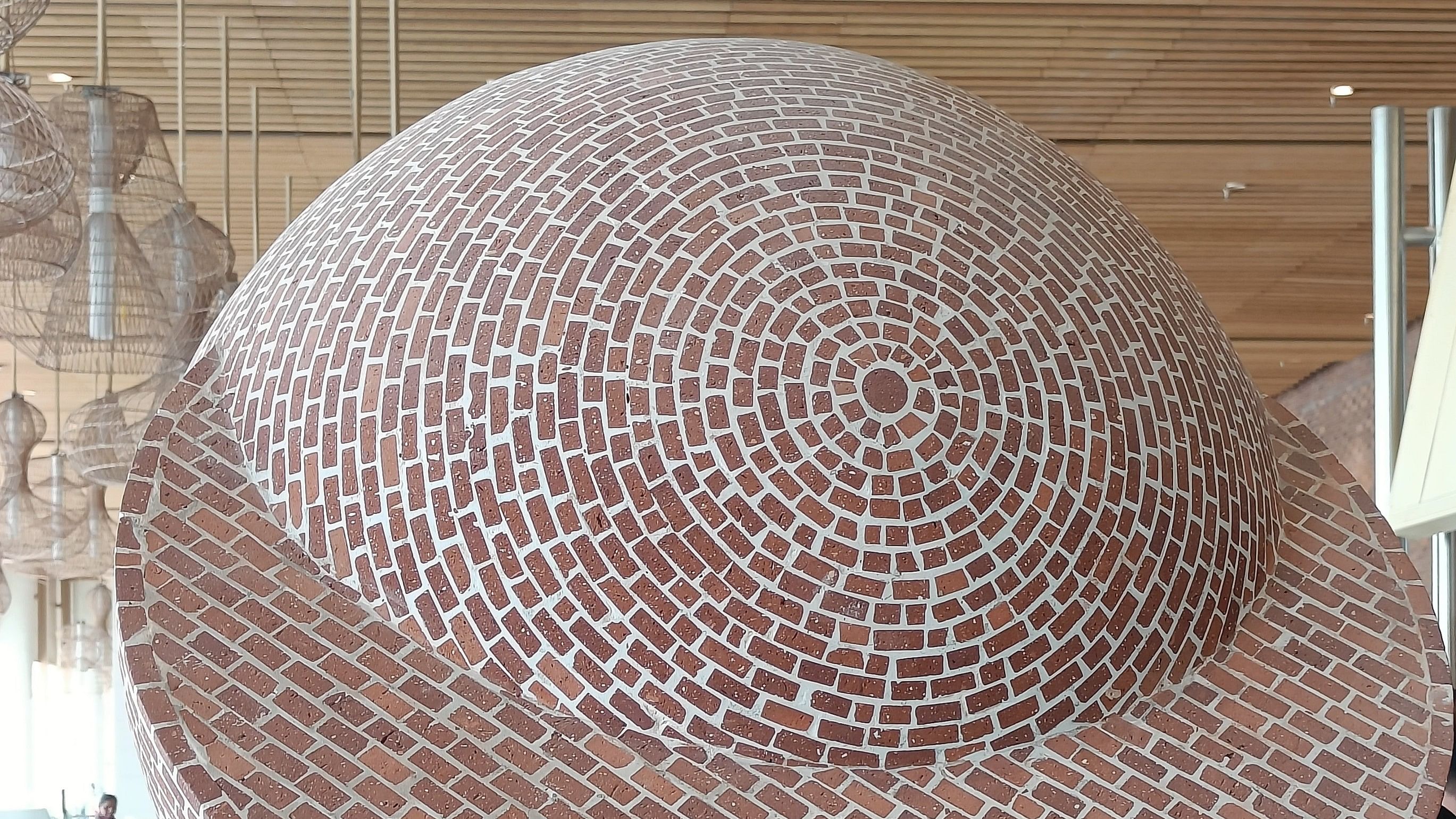
Construction materials are sometimes used in unexpected ways by artists and sculptors to comment on urban constructs and as metaphors for the contradictions and conflicts embedded in living conditions. These often allude to space, architecture, boundaries and psychological encounters regarding physical as well as intangible barriers.
Bricks have been used by several artists to make sculptures and installations, especially in public spaces. A much-cited instance is of artist Jorge Méndez Blake, who in 2007, created a massive 75-foot-long brick wall to convey the idea of how an idea can be transformative. A slight curve was visible on the top of the wall, which on close inspection, revealed a book on the floor — a copy of Franz Kafka’s The Castle, over which the bricks were placed. The wall was formed without any mortar and was balanced carefully over the book — an interesting confluence of art, architecture and literature! Almost 20 years ago, ‘Brick Man’ was proposed by Antony Gormley as a more than 120-foot tall brick sculpture at the Leeds Railway station, England. However, it never materialised.
In India too, several artists use discarded and demolished bricks in their sculptural works, and others have specially designed bricks made for their installations. Girjesh Kumar Singh is an artist whose works explore notions of identity and migration through brick sculptures and installations. Singh collects bricks from demolition sites, assessing them for their sculptural potential.
He then creates 3D portraits, faces of anonymous people from his imagination who inhabit and shape the built environment. One of his works, ‘In Transit’, depicts a resting man, at a point of hiatus in the journey of life and living.
Teja Gavankar, based in Mumbai, uses bricks in her works, where geometrical precision explores spatial encounters and unmasks underlying philosophies straddling various disciplines.
Her work ‘Khora’, a term that alludes to the philosophical concept of space or interval, is part of the art at Terminal 2, at the Kempegowda International Airport, Bengaluru. It depicts two hemispheres as if frozen while in motion and is made of miniature bricks.
In her recent solo exhibition in Bengaluru, Pragati Dalvi Jain used bricks to raise questions regarding invisible barriers of separation between individuals and sections of society. ‘Ego-The Gradual Construction’ is an ongoing project, with variable iterations, and in this specific case, a continuous wall of irregular height, using 6,000 bricks, engraved with the word EGO, ran across the periphery of the room to end up in a rubble.
In closing, one must mention artist Carl Andre’s ‘Equivalent VIII’ (1966), a series of minimal sculptures made entirely of bricks. It was acquired and exhibited at the Tate Gallery in 1972; as many as 120 identical bricks were laid out in two layers to form a rectangle. It was years later that the work began to be criticised for several reasons — its exorbitant price, and what was perceived as an ordinary arrangement of bricks lacking artistic merit.
Dab Hand is your artworld lowdown.
The author is a Bengaluru-based art consultant, curator and writer. She blogs at Art Scene India.